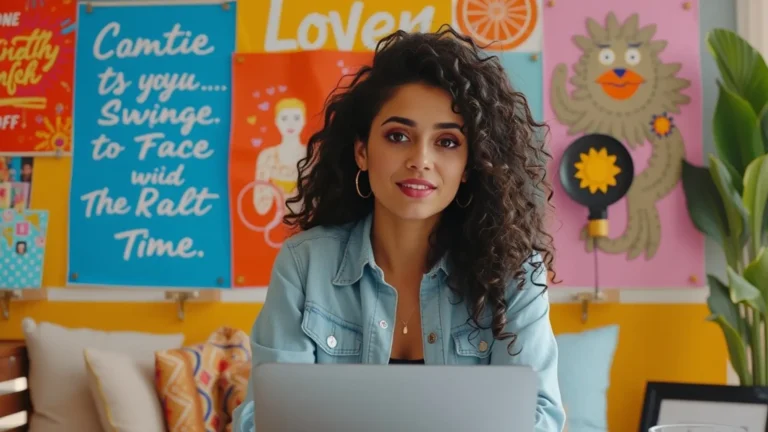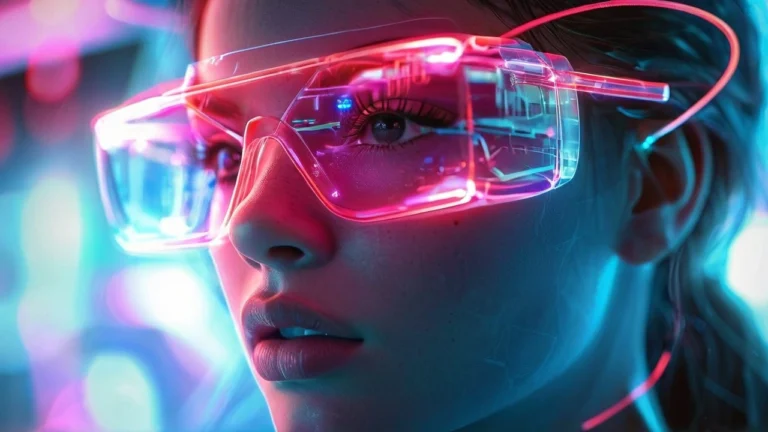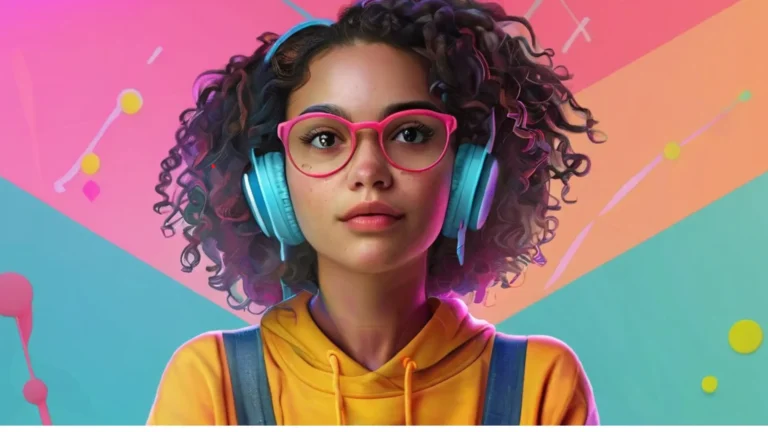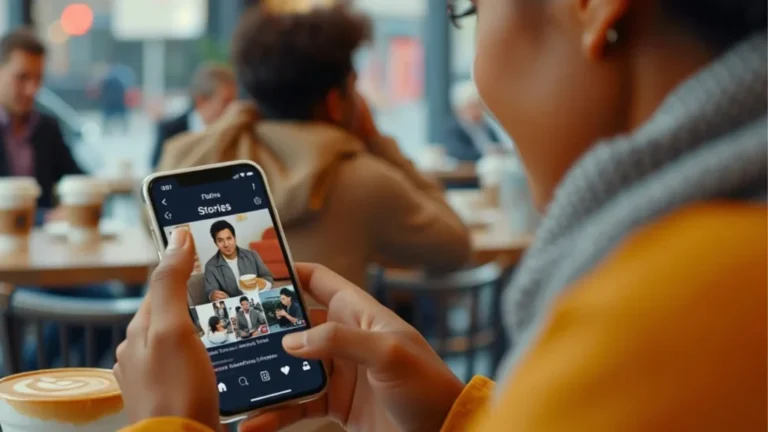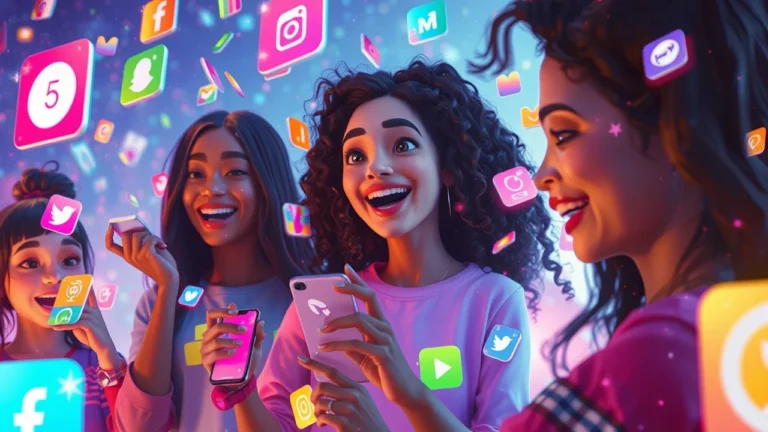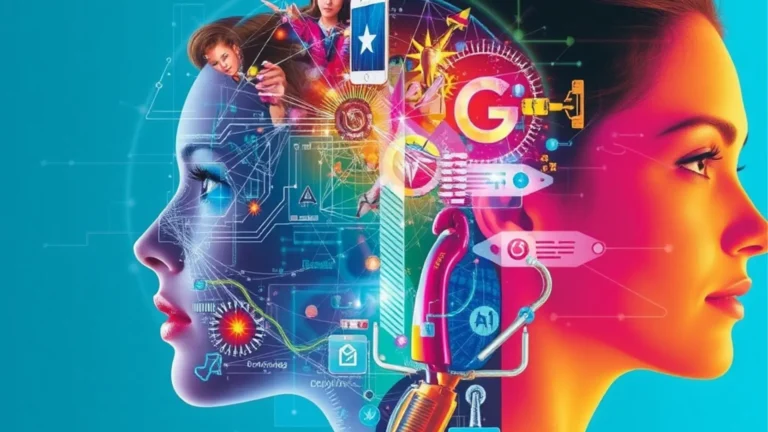The Power of Visual Content in Digital Marketing
Discover how visual elements can enhance audience interaction and boost conversions in the realm of digital marketing. This guide offers effective strategies for utilizing images, videos, and graphics to captivate audiences and establish a strong brand presence.
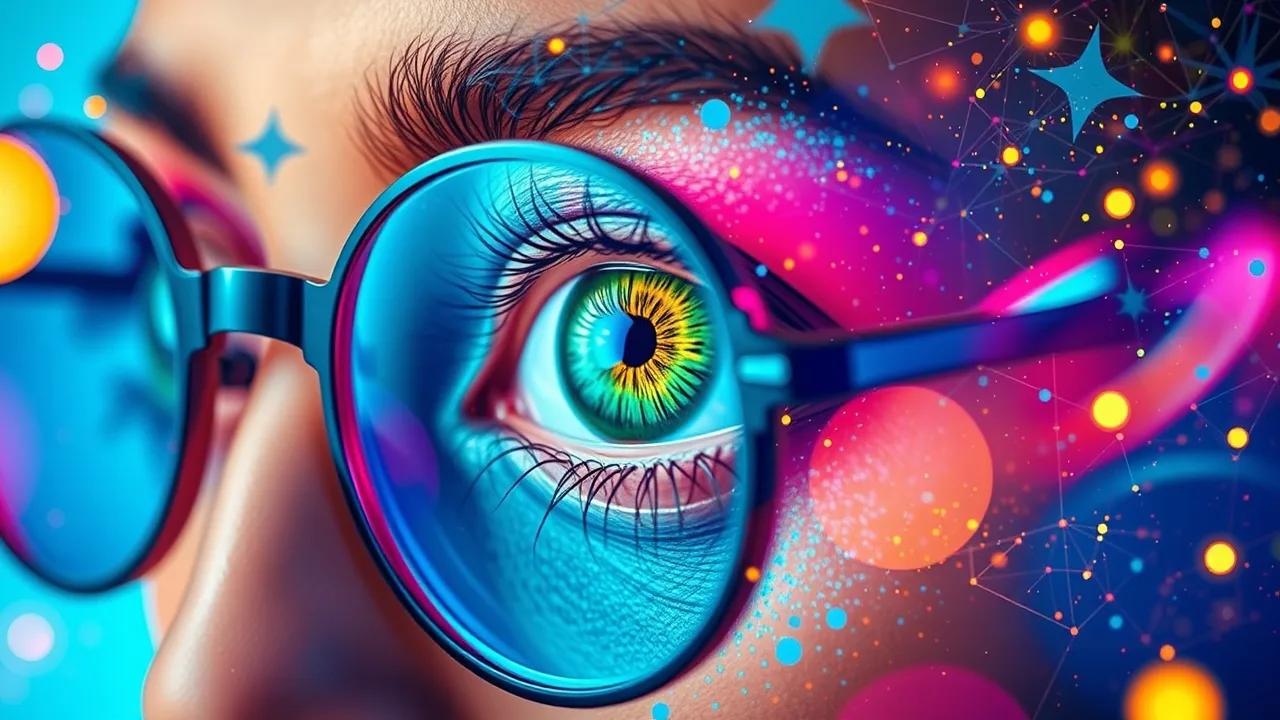
Introduction
In today’s digital environment, capturing and retaining audience attention is more challenging than ever. With an overwhelming amount of information vying for our focus, visual content has become an indispensable asset for marketers aiming to stand out. As consumers increasingly prefer visual forms of communication, it’s crucial to grasp the significance of visuals in digital marketing. This article delves into the psychology of visual engagement, explores various types of visual content, and provides insights on crafting impactful visual strategies that resonate with audiences and enrich brand narratives.
Visual content doesn’t just look good. It plays a very important role in shaping perceptions, generating engagement, and influencing decision making. In this article, we will explore the role of visual content in digital marketing, the psychology that makes it effective, and practical ways to use the power of visuals to make your engagement and conversions tick.
Understanding the Role of Visual Content in Digital Marketing
An eye-tracking study of visuals by Hootsuite showed increased viewer participation, clear transmission of messages, and conversions: as a result, effective storytelling through images, video and infographics, forming indispensable elements of a thriving campaign. This shows creativity that is not only needed and used to capture viewer eyeballs but also for representing message and values.
Moreover, the presence of compelling images can facilitate better search engine optimization (SEO) outcomes. Optimizing images and videos with related keywords, alt tags, and descriptions can enhance business search engine visibility and induce more organic traffic to a website. Ultimately, by using visual content in their digital marketing strategies, they make user experiences better and more measurable, which makes it even more important to be able to tell stories with visuals for strong brand connections.
The Psychology Behind Visual Engagement
The Psychology Behind Visual Engagement opens how visual elements, from colors and shapes to images, affect emotions, gain attention, and propel human behavior, which explains the reasons why good visuals form an important part of advertising and communication. The immediate response that visuals generate after fast processing makes them the perfect tool in the most current digital marketing strategy. Adding even more credible and relevant visual graphics, brands find it easier to communicate more effectively while creating better connections with their audience through an enhanced user experience.
Another, these attractive images will help them engage and interact with even more critical performance metrics conversion and click-through rates, thereby being shared and consumed when they are engaging for more reaches through the organic word of mouth. Understand how people react psychologically about images is going to benefit marketers who can better work toward crafting more attractive engaging content which will grab one’s interest and make sure it lasts, meaning well-positive results in marketing campaigns.
Types of Visual Content: From Infographics to Videos
Types of Visual Content: From Infographics to Videos explores the forms of visual media, ranging from images, infographics, GIFs, videos, and animations, detailing how each can be applied effectively to engage audiences and enrich digital marketing strategies. Infographics are an excellent method of sharing facts or procedures because they combine great-looking images with educational text. Videos, however, offer dynamic storytelling opportunities that can engage viewers, promote products, and enhance understanding through stories or demonstrations.
Incorporating a mix of visual formats in a marketing campaign enhances audience engagement and enhances information retention. Studies show that visual information is more likely to be remembered than plain text. This is especially important, given the sheer volume of content that is available to audiences in the digital world. Marketers should, therefore, focus on creating a balanced visual strategy that encompasses strong images, infographics, GIFs, and videos. Such an approach will capture different audience preferences, thereby making the marketing efforts more effective in general.
Creating a Visual Content Strategy for Effective Marketing
Creating a Visual Content Strategy for Effective Marketing outlines the key steps in planning and producing compelling visuals, from setting clear goals and understanding the target audience to selecting the right formats and platforms, which can ensure a cohesive approach to maximize engagement and brand impact. With visual content in your marketing strategy, audience retention and comprehension will surge by leaps and bounds. Understanding the needs and preferences of your target audience enables you to tailor your visuals to resonate with them, which is critical in maximizing engagement.
To create a successful visual content strategy, you should first define your brand’s visual identity that supports your overall brand messaging and values. Brand recognition and trust are enhanced through consistency in visual elements like color schemes, fonts, and imagery styles. Another point of consideration would be the specific distribution platforms where your content is distributed because there are different audience expectations and behaviors for the different social media platforms. For example, LinkedIn values expert photography and educational graphics, but Instagram and Instagram value the lively visuals.
Finally, measuring the performance of your visual content is the basis for continuous improvement. One can analyze engagement metrics in terms of likes, shares, and comments along with conversion rates to see what kind of visuals do the best.
Best Practices for Using Visuals on Social Media
Best Practices for Using Visuals on Social Media covers the most effective ways to create and share captivating visuals, including best practices on optimizing image size, consistency in brand, usage of engaging formats such as stories and reels, and utilizing data insights to boost engagement with audiences. Such attention to aesthetics not only catches the eye but also tells the brand’s story better, making it a memorable experience for users.
Finally, it’s essential to select the correct platform for your visual content. Each social media platform appeals to a different demographic, and this knowledge of where your target audience hangs out can aid in making better choices. For instance, while some platforms, like Instagram and Pinterest, are text- or video-heavy, others thrive on being visually attractive. This means that besides engaging the audience, changing your visuals to suit the medium ensures that all efforts put in will be in harmony with the audience’s preferences and practices.
Enhancing Brand Storytelling Through Visual Elements
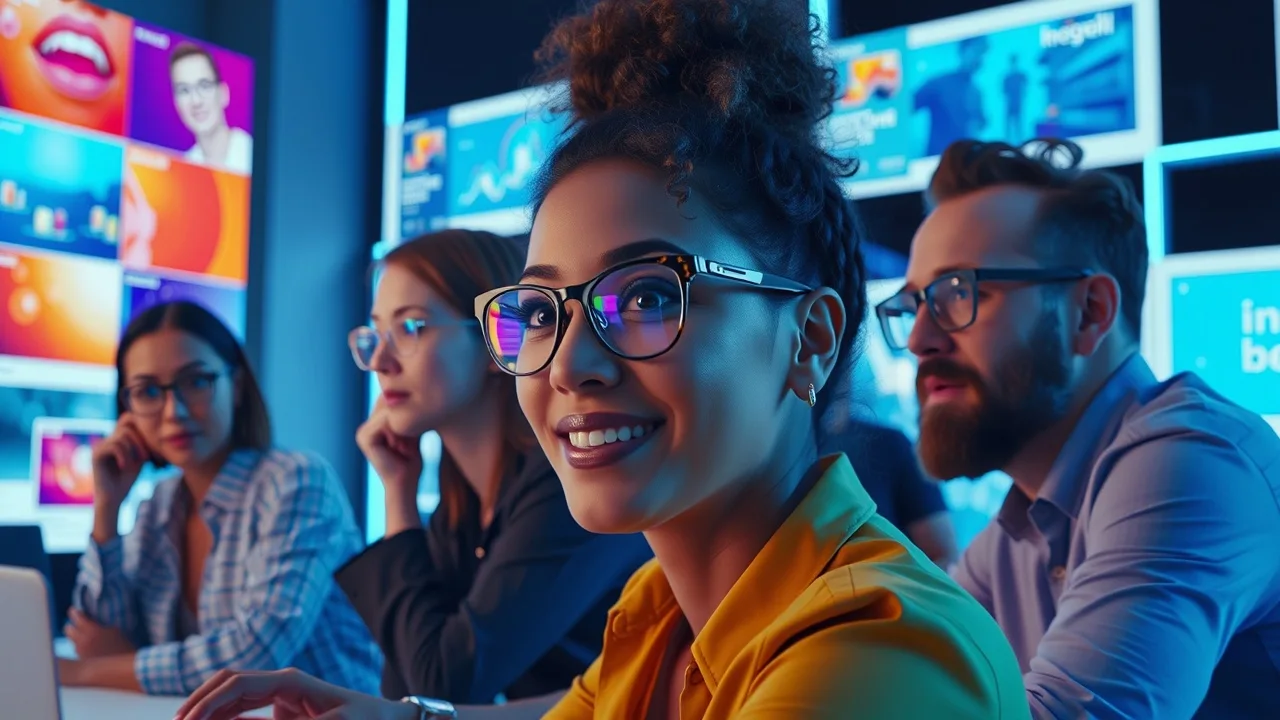
Visual storytelling is one of the most powerful tools of digital marketing, enabling brands to tell their message effectively and memorably. Companies can create emotions, catch attention, and build a better relationship with their audience through visual elements such as pictures, movies, infographics, and animations. This comprehensive subject discusses how visual elements enhance brand storytelling and why they are crucial for building a strong, lasting brand identity.
Brands that adopt images give their audience the most memorable experiences. They make every visual element, which includes color schemes and even typography, enhance the complete story and give more vigor to the brand identity. Like, for instance, incorporating imagery that would be meant to represent the goals or way of life for that target audience may develop the relationship and encourages people to care and commit themselves more about the brand. This is an important connection because it makes would-be customers brand ambassadors and hence increases the reach of the brand though experience sharing.
The Importance of Visual Storytelling
- Capture: Visuals are digested faster by the human mind than text, thus constituting a critical ingredient to capture audience interest swiftly.
- Emotional Engagement: Pictures and videos create emotional attachments and make stories more believable, hence more memorable; helping brands connect on an empathetic level with the target audience.
- Making Difficult Information Easy: Infographics and other visual supports enable the breaking down of intricate data or ideas into graphics that are easier for the user to understand, therefore improving user understanding and involvement.
Key Visual Elements in Brand Storytelling
- Images: These are high-quality images that express the personality and values of the brand, thereby conveying the message.
- Videos: These are short videos and animations that tell stories or help to market products or promote customer testimonials.
- Infographics: These are visual tools presenting data and insights in a beautiful way so that information can be digested and shared.
- Illustrations and Graphics: These are custom illustrations that give a unique and personal touch to the stories of brands, thereby making content stand out.
- User-Generated Content: Using customer pictures and videos can add reality to the brand story.
Strategies for Effective Visual Storytelling
- Consistency in Visual Identity: Using a consistent color palette, typography, and design style across all visuals helps build recognition.
- Knowing the Audience: Ensuring that visuals align with the preferences and needs of the target audience means that the story will have resonance with them.
- Incorporation of Brand Values: Visuals should be in alignment with the core values and mission of the brand and support the message of the brand.
- Data-Driven Insights: Analyze engagement metrics to hone visual content strategies based on your audience’s expectations and trends.
Examples of Successful Visual Storytelling
- examples of companies who have successfully included visual storytelling into their marketing strategies, like Airbnb’s user-generated photo stories or Nike’s impactful video advertisements.
- insights into the factors that contribute to the success of these ads and how other brands might use comparable tactics.
The Role of Emerging Technologies
- Augmented Reality (AR): The use of AR to enhance storytelling by creating immersive experiences where users can interact with virtual elements.
- Interactive Videos: Allowing viewers to make choices within a story, increasing engagement and creating a personalized experience.
- AI and Personalization: Using AI to analyze user data and tailor visual content, making the storytelling experience more relevant to individual users.
Assessing Visual Content’s Effect on Campaign Performance
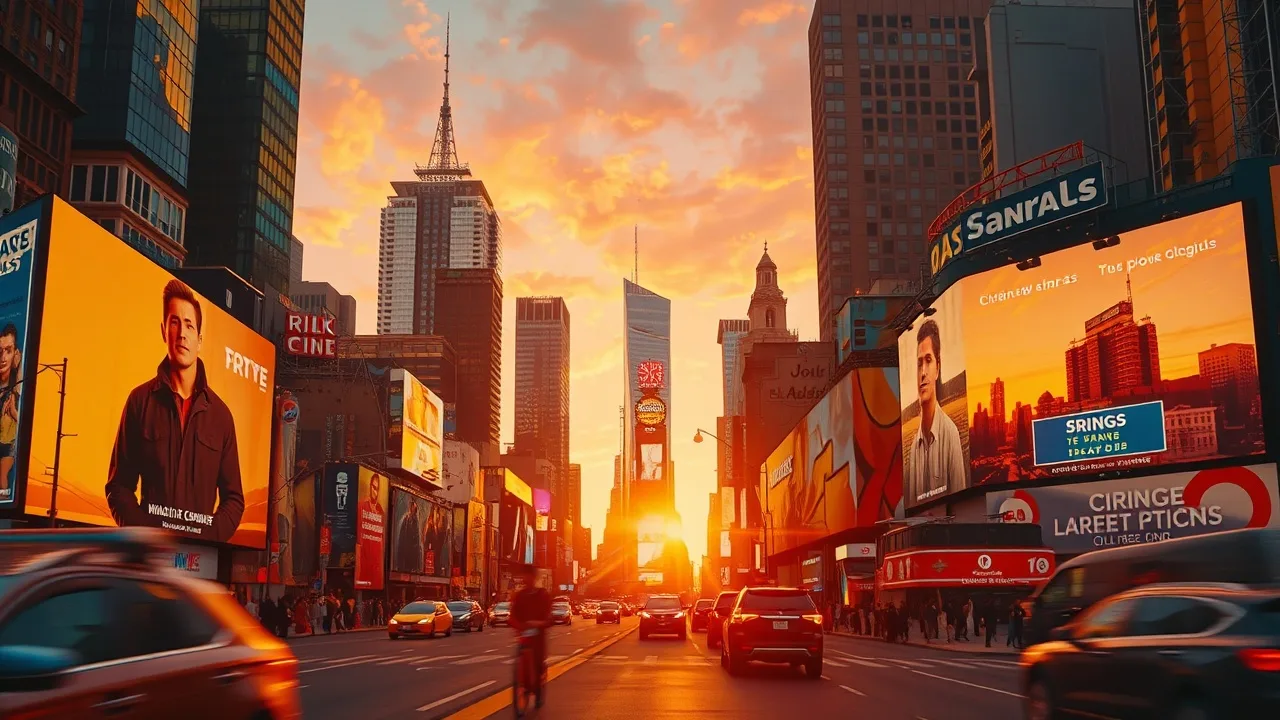
To understand audience engagement and general campaign performance, measuring visual content influence on digital marketing campaigns is necessary. KPIs such as click-through rates, conversion rates, and bounce rates can serve as metrics to determine the efficacy of visual elements, like images and videos. In a typical scenario, where staying longer on the site would usually be associated with greater conversion rates, good quality images would help minimize the bounce rate. With proper visual content, brand storytelling can be enhanced to bring in even more engaging experiences to appeal to the target market.
Marketers need analytics tools to track user interaction and engagement through various digital channels in order to quantify the effect of visual content. For example, metrics like social shares and time on page might help marketers determine which images their visitors are interested in most. A/B testing allows for optimization of campaigns based on real-time feedback through A/B testing of various visual elements, which eventually leads to an improvement in ROI. Being aware of such dynamics helps marketers improve their tactics and increase the impact of visual content in achieving their goals.
Visual Content and SEO: Optimizing for Better Visibility
Visual content is also crucial to enhancing SEO and boosting the visibility of websites. Positive user experience drives the decision of search engines, as a website with more interaction from visitors, including watching videos or other visuals, means they will stay longer on the page. It sends a message to search engines that the content is important, and such pages receive better rankings in the results list. Furthermore, images, videos, and infographics not only catch people’s attention but also aid in better retention of the information, thus increasing the chances of users sharing it with their networks.
Visual content has become one of the most important tools for attracting audiences and adding user experience in digital marketing. While having great visuals can help a lot, but to enhance visibility and boost traffic, visual content should be optimized for search engines. This comprehensive topic reveals the connection between visual content and SEO and provides actionable steps to optimize images, videos, and graphics for enhancing search rankings and visitor acquisition.
The Role of Visual Content in SEO
- Enhancing User Experience: Images, videos, and infographics break up large blocks of text, making content more digestible and engaging, which can lead to longer time on site—a positive ranking factor for SEO.
- Reducing Bounce Rate: Engaging visuals can capture visitors’ attention and keep them on the page longer.
- Increasing Shareability: High-quality visual content is more likely to be shared on social media platforms, driving referral traffic and generating backlinks.
Image Optimization Techniques
- File Names: Use descriptive keyword-rich file names for images instead of generic names.
- Alt Text: Use alt text (alternative text) for each image using keywords wherever possible.
- Image Size and Compression: Large image files can cause slow page loading. Make use of the image in WEBP format.
- Responsive Images: Ensure that images are responsive and optimized for various screen sizes to ensure good user experience on desktop, mobile, and tablet devices.
- Structured Data (Schema Markup): Using structured data schema markup helps search engines understand the context of your images, making them more likely to appear in rich search results and image searches.
Video SEO Best Practices
- Video Hosting Platform: Decide whether to host videos on your website or use external platforms like YouTube. Hosting on YouTube can increase visibility
- Video Titles and Descriptions: Use relevant keywords in video titles and descriptions to improve visibility in search results.
- Thumbnails: Use custom, visually appealing thumbnails to increase click-through rates.
- Transcripts and captions: Including transcripts and captions for videos, they help improve accessibility and at the same time provide more text for search engines to crawl through, which enhances the SEO.
Infographic Optimization
- Keyword-Rich Titles and Descriptions: Infographics must have title and metadata with descriptions including keywords so search engines can easily index them.
- Embed Codes: An embed code should be given for infographics to allow for sharing.
- Alt Text and File Names: As in images, infographics also require keyword-rich alt text and file names to allow for indexing and visibility.
- Promotional Strategy: Social media, blogs, and other content distribution networks can be used to share infographics to increase the visibility of the website and drive traffic back.
Leveraging Image Search and Visual Search
- Google Image Search Optimization: Optimize your images for Google Image Search using high-quality, relevant visuals with appropriate metadata, including titles and alt text.
- Visual Search Tools: With the advent of visual search tools like Google Lens and Pinterest Lens, optimizing images for visual search is becoming ever more important.
- Image Context and Relevance: Images should appear alongside relevant text and the other text surrounding it should have keywords used in the alt and title of the image.
Measuring the Impact of Visual Content on SEO
- Traffic Analysis: Monitor traffic from visual content through tools such as Google Analytics, which include image search traffic and referral traffic from sites like Pinterest and Instagram.
- Engagement Metrics: Track engagement metrics, such as time on page, bounce rate, and click-through rates, to assess how visual content impacts user behavior and overall SEO performance.
- Backlink Analysis: Use tools like Ahrefs or SEMrush to track backlinks generated by visual content, such as infographics or shareable images, and assess their impact on your site’s authority.
Future Trends in Visual Content and SEO
- AI and Image Recognition: Improved AI-powered image recognition enables search engines to better understand content in images, making optimization a much more important task.
- Increasing Popularity of Visual Search: With the increasing popularity of visual search tools, improving images for visual search would be one of the high points for SEO strategies.
- Interactive and 3D Content: Interactive graphics, 3D images, and AR experiences will play a more significant role in SEO, as they offer unique and engaging ways to present information and attract user attention.
The Future of Visual Content in Digital Marketing
The emerging technologies and consumer behavior shifts will likely create a big change in the future of visual content in digital marketing. Brands will be given new tools to create visually attractive experiences as augmented reality and artificial intelligence increasingly enter the marketing mix. Other than enhancing customer engagement, this will enable them to provide content in a more customized way, thereby ensuring that visual elements effectively reach a specific target audience.
Short-form videos and visually engaging content are increasingly popular, especially among younger generations. Platforms such as Instagram and TikTok drive this trend by emphasizing the importance of engaging visuals and short, interesting bursts that effectively communicate the brand’s message. Companies must adapt their strategies to include these formats if they are to remain relevant, leveraging the universal appeal of visual content to drive community engagement and brand awareness.
The effective utilization of visual content will be a key requirement as companies struggle with increased competition in the digital world. Brands that invest in quality imagery and understand the subtleties of design and narrative will likely be able to attract customers more effectively. With changing markets, this focus on aesthetics and storytelling will allow businesses to communicate their unique value propositions in a more effective way through compelling images and videos, which will lead to increased conversions and brand loyalty.
Case Studies: Successful Brands Leveraging Visual Content
Successful companies in different industries have been able to use image content to attract their customers and deliver the desired outputs. For example, successful brands such as Apple and Nike have been able to share their brand values and stories through visual images and videos that they find appealing to their consumers.
This visual approach establishes an emotional connection with consumers and reinforces their positioning, eventually leading to increased conversions and brand loyalty. Starbucks is another good example that has successfully presented its product offerings as beautiful on Instagram. The seasonal promotions and good beverage photos used by the brand attract potential customers.
The companies, such as ASOS and Zara in the fashion industry, exploit user-generated content to depict their products. They thus produce related and authentic visual content through persuading customers to take pictures of themselves wearing products and hence strengthening marketing efforts. The strategy not only projects the apparel in real scenarios but also creates a commonality between the firms’ customers and the brands and therefore displays the role played by visual content in constructing brand identity and influencing sales.
Conclusion
As our world grows increasingly visual, brands that capitalize on the potential of visual content will stand out from the competitors. Businesses may produce engaging material that strikes a deep chord with their audience by comprehending the psychology of images, implementing social media best practices, and regularly assessing impact. The future of digital marketing favors those who are visually inclined, so brands need to adopt innovative visual methods to expand their reach.

